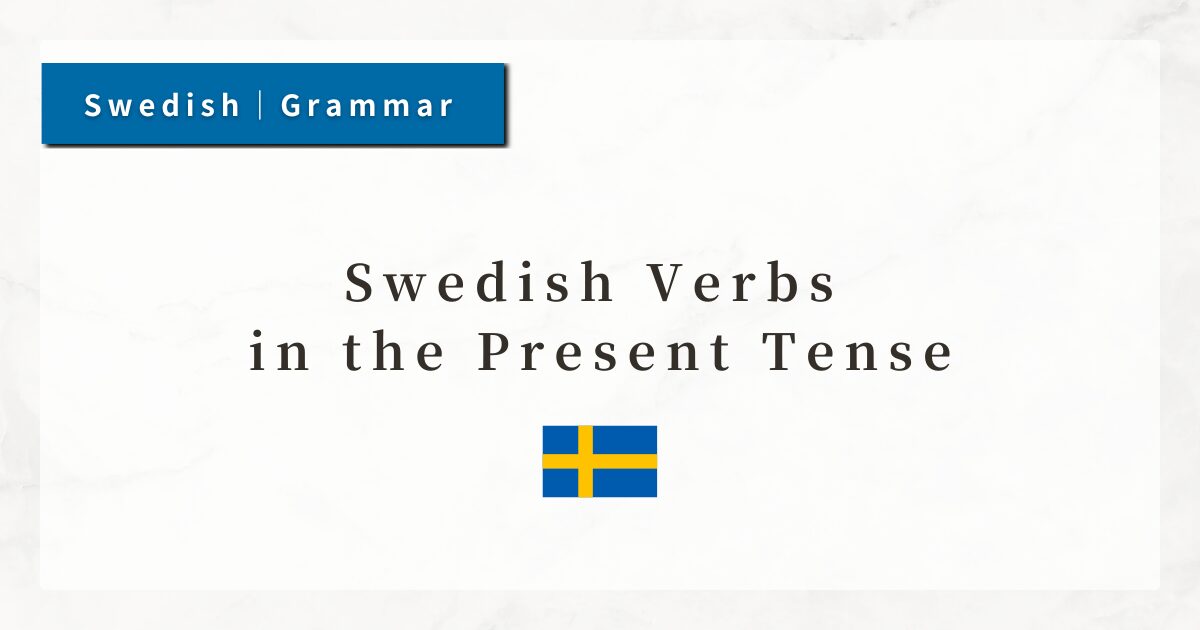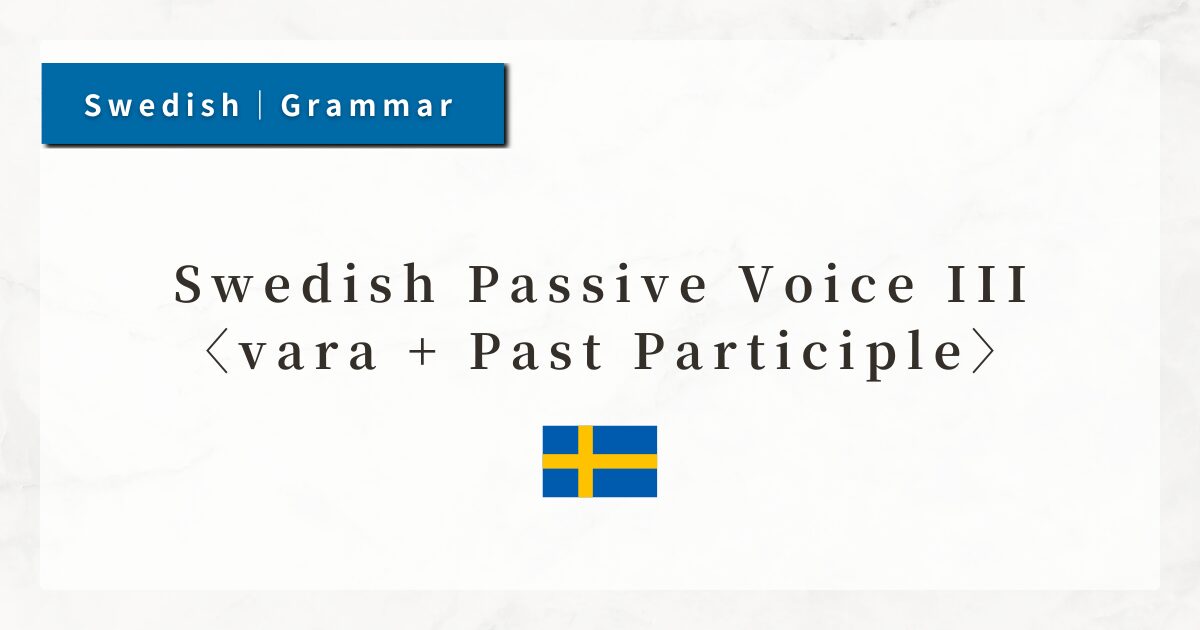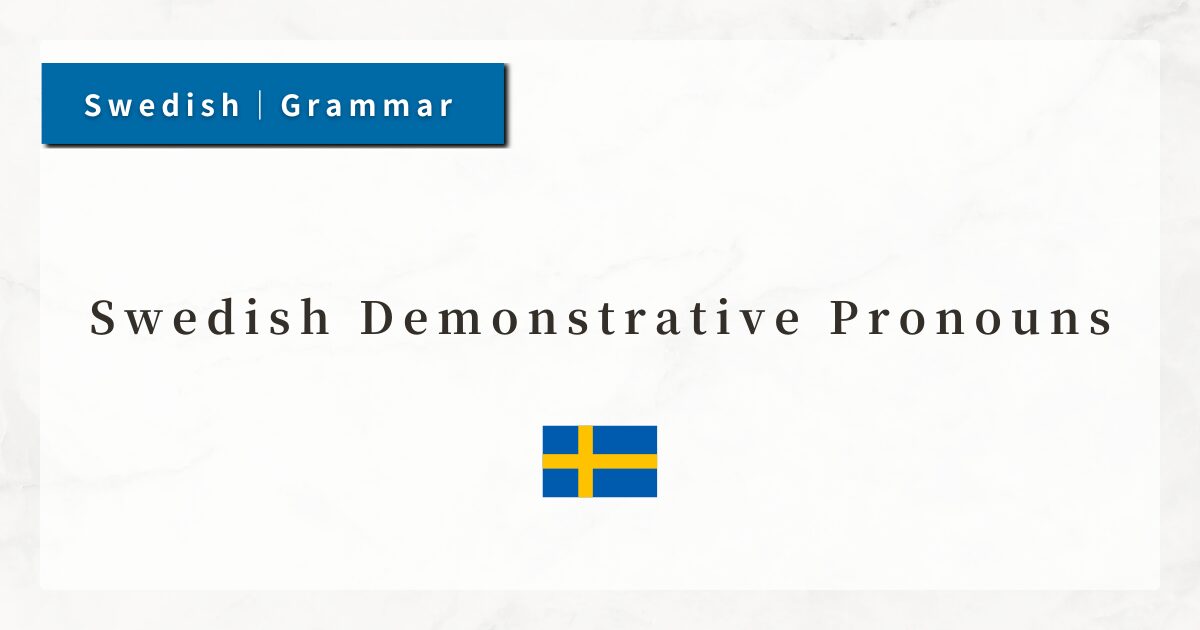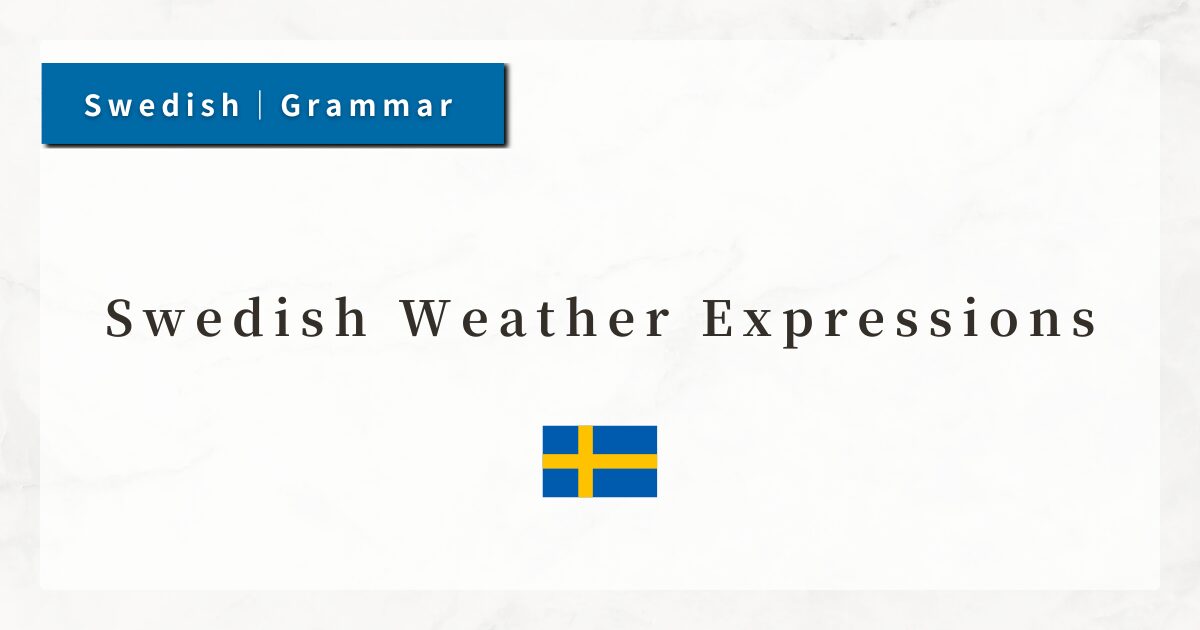#18 Swedish Modal Auxiliary Verbs|Types and How to Use Them
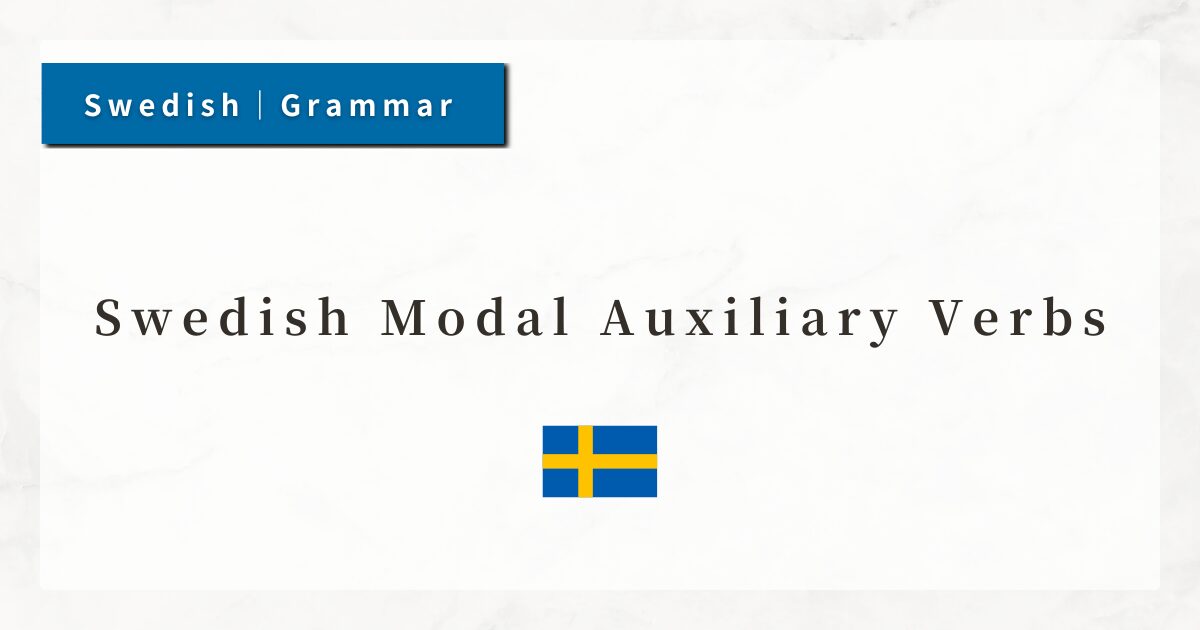
In Swedish, when I want to express ideas such as “can,” “want to,” or “must,” I use modal verbs. These are special verbs placed before the main verb to indicate ability, intention, obligation, permission, and similar notions.
Their usage is very similar to English modal verbs such as can, want to, and must, but Swedish also has its own unique features and word order rules.
In this lesson, I will explain the basic meanings of modal verbs, their word order rules, and the detailed usage of the six most common modal verbs.
1. What Are Modal Verbs?
Modal verbs are auxiliary verbs used to add the speaker’s judgment, ability, or feelings to the main verb. They express the following meanings:
- kan:Possibility/Ability (can)
- vill:Intention/Desire (want to)
- måste:Obligation/Necessity (must, have to)
- får, bör, ska, etc.:Probability/Permission/Advice
In other words, modal verbs express ability (can), desire (want to), or obligation (must), among others.
Two key rules when using modal verbs are:
- A modal verb is always followed by a verb in its infinitive form.
- Modal verbs not only change the meaning of the verb but also nuance of the entire sentence.
Examples:
- Jag kan prata svenska.
(I can speak Swedish.) - Hon vill läsa en bok.
(She wants to read a book.) - Vi måste gå nu.
(We must leave now.)
In each case, the modal verb (kan / vill / måste) modifies the meaning of the main verb.
2. Word Order and Basic Usage
In Swedish, modal verbs follow a simple word order: “Subject + Modal Verb + Infinitive.”
- Du ska komma.
(You are going to come.) - Jag måste arbeta.
(I must work.) - De kan simma.
(They can swim.)
Here, ska, måste, and kan are modal verbs, followed by komma, arbeta, and simma in the infinitive.
Unlike English, there is no “to” before the infinitive, which makes this structure much easier for learners.
3. The Six Most Common Modal Verbs
Here I will explain the meaning and usage of six frequently used modal verbs in Swedish.
3-1. kan – can, to be able to
kan expresses the ability or possibility to do something. Equivalent to English can.
- Jag kan köra bil.
(I can drive a car.) - Kan du simma?
(Can you swim?) - Han kan tala engelska.
(He can speak English.)
3-2. vill – want to, intend to
vill expresses intention, desire, or will. Equivalent to English want to.
- Jag vill resa till Sverige.
(I want to travel to Sweden.) - Vill du äta middag?
(Do you want to have dinner?) - Barnet vill leka.
(The child wants to play.)
3-3. måste – must, have to
måste expresses obligation or necessity. Equivalent to English must or have to. A strong expression, sometimes softened in casual conversation.
- Jag måste studera.
(I must study.) - Du måste vara tyst.
(You must be quiet.) - Vi måste gå nu.
(We must leave now.)
3-4. ska – will, be going to
ska expresses future intention or scheduled events. Equivalent to English will or be going to.
- Jag ska träffa honom imorgon.
(I will meet him tomorrow.) - Vad ska du göra?
(What are you going to do?) - Vi ska resa nästa vecka.
(We are going to travel next week.)
3-5. får – may, to be allowed to
får expresses permission or prohibition. Equivalent to English may or can (in the sense of permission).
- Du får gå hem.
(You may go home.) - Får jag låna din penna?
(May I borrow your pen?) - Ni får inte röka här.
(You may not smoke here.)
3-6. bör – should, ought to
bör is used for advice, recommendation, or mild obligation. Equivalent to English should.
- Man bör sova minst sju timmar.
(One should sleep at least seven hours.) - Du bör ta med dig ett paraply.
(You should take an umbrella with you.)
4. Negatives and Questions
4-1. Negative Form
Structure: Subject + Modal Verb + inte + Infinitive
- Jag kan inte simma.
(I cannot swim.) - Vi ska inte gå dit.
(We are not going there.) - Hon vill inte äta kött.
(She does not want to eat meat.)
Simply place inte after the modal verb.
4-2. Questions
Structure: Modal Verb + Subject + Infinitive + ?
- Kan du spela piano?
(Can you play the piano?) - Vill ni gå ut?
(Do you want to go out?) - Ska vi börja?
(Shall we begin?)
Yes/No questions are made by placing the modal verb at the beginning.
5. Summary
- Modal verbs follow the word order: Subject + Modal Verb + Infinitive.
- The six most common are: kan (can), vill (want to), måste (must), ska (will/going to), får (may), bör (should).
- The structure is simpler than in English: no “to” is needed, and word order remains consistent.
- Negatives and questions are easy to form, making modal verbs practical for beginners from the start.

